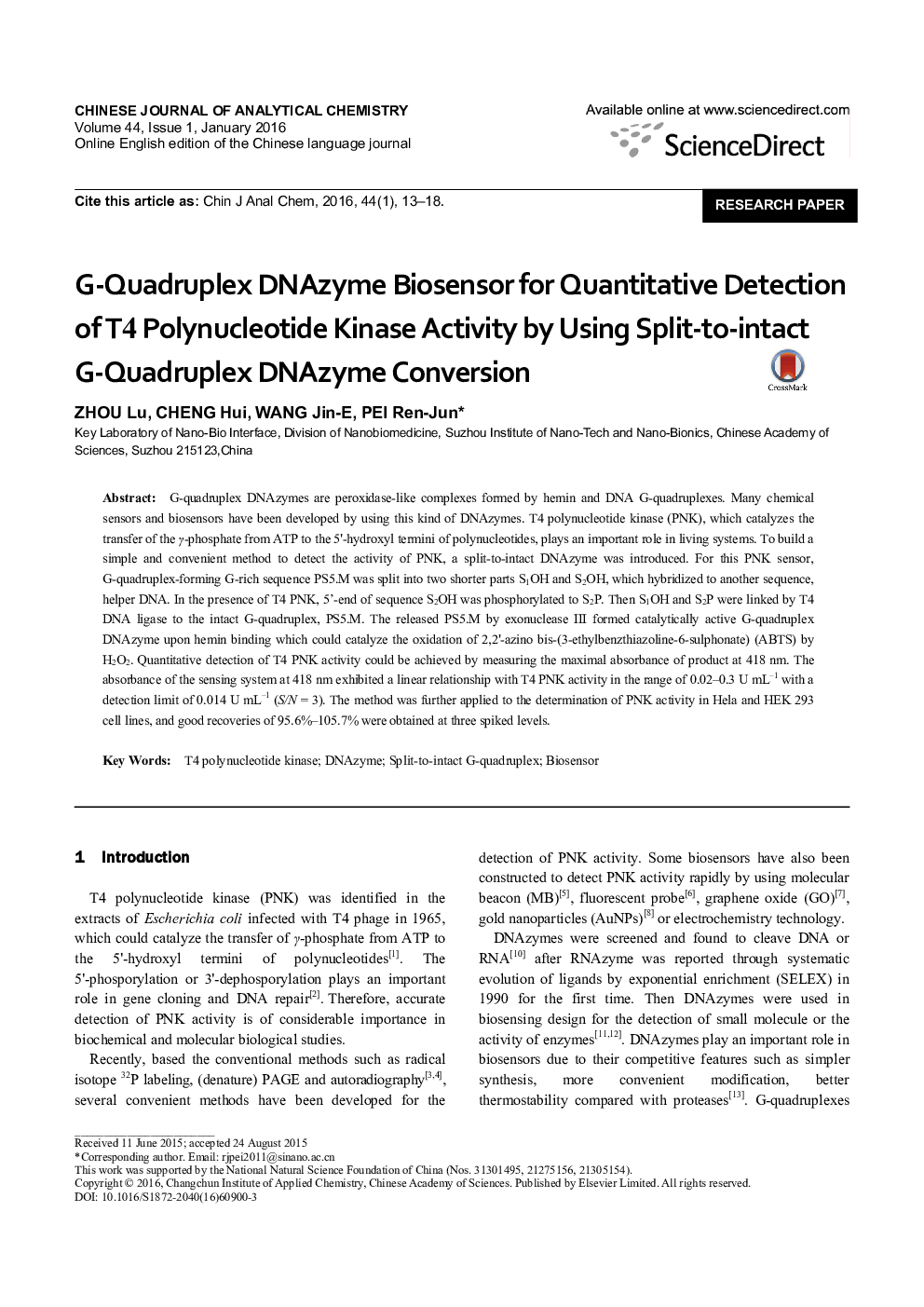| Article ID | Journal | Published Year | Pages | File Type |
|---|---|---|---|---|
| 1181783 | Chinese Journal of Analytical Chemistry | 2016 | 6 Pages |
G-quadruplex DNAzymes are peroxidase-like complexes formed by hemin and DNA G-quadruplexes. Many chemical sensors and biosensors have been developed by using this kind of DNAzymes. T4 polynucleotide kinase (PNK), which catalyzes the transfer of the γ-phosphate from ATP to the 5′-hydroxyl termini of polynucleotides, plays an important role in living systems. To build a simple and convenient method to detect the activity of PNK, a split-to-intact DNAzyme was introduced. For this PNK sensor, G-quadruplex-forming G-rich sequence PS5.M was split into two shorter parts S1OH and S2OH, which hybridized to another sequence, helper DNA. In the presence of T4 PNK, 5'-end of sequence S2OH was phosphorylated to S2P. Then S1OH and S2P were linked by T4 DNA ligase to the intact G-quadruplex, PS5.M. The released PS5.M by exonuclease III formed catalytically active G-quadruplex DNAzyme upon hemin binding which could catalyze the oxidation of 2,2′-azino bis-(3-ethylbenzthiazoline-6-sulphonate) (ABTS) by H2O2. Quantitative detection of T4 PNK activity could be achieved by measuring the maximal absorbance of product at 418 nm. The absorbance of the sensing system at 418 nm exhibited a linear relationship with T4 PNK activity in the range of 0.02−0.3 U mL−1 with a detection limit of 0.014 U mL−1 (S/N = 3). The method was further applied to the determination of PNK activity in Hela and HEK 293 cell lines, and good recoveries of 95.6%−105.7% were obtained at three spiked levels.
Graphical abstractA label-free G-quadruplex DNAzyme biosensor detecting T4 PNK was developed using split-to-intact G-quadruplex DNAzyme conversion by T4 DNA ligase and exonuclease III.Figure optionsDownload full-size imageDownload as PowerPoint slide
